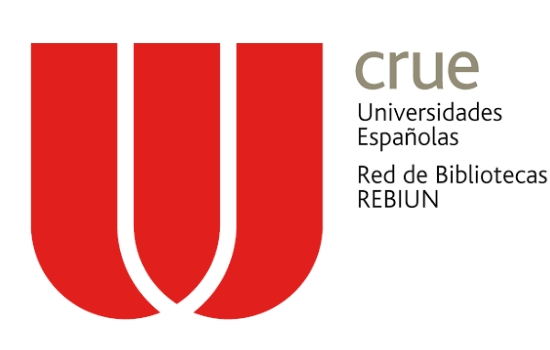Descrições em Etnomatemática: descrevendo "a matemática de uma prática" ou "uma prática matematicamente"?
Keywords:
Prática em etnomatemática, Descrição, Cultura, Interrogação mútua, Ethnomathematics practice, Description, Culture, Mutual InterrogationAbstract
Resumo
Este artigo visa discutir o significado da descrição de uma prática em Etnomatemática. Para isso, incialmente, buscamos desvelar o que é uma descrição a partir de uma discussão estabelecida por Ostrower (1983) sobre diferentes perspectivas da relação entre um pintor e sua pintura. Em seguida, tomamos uma concepção de descrição que não separa descritor da prática que é descrita. Nesse rastro, apontamos qual seria o papel e as metas do pesquisador em Etnomatemática nessa visão, bem como um caminho metodológico coerente com essa perspectiva, no caso, a metodologia de Interrogação Mútua de Alangui (2006).
Abstract
This paper aims to discuss the meaning of the description of a practice within Ethnomathematics. For that, we start revealing what a description is by using a discussion by Ostrower (1983) on different perspectives about the relation between a painter and his painting. In sequence, we take into consideration a conception of description that does not separate describer from a described practice. Within this idea, we point out what the Ethnomathematics researcher’s role within this vision would be, as well as a methodological path based on Alangui’s Mutual Interrogation methodology (2006).
Downloads
References
Adam, S., Alangui, W., & Barton, B. (2003). A Comment on: Rowlands & Carson’s ‘Where would formal, academic mathematics stand in a curriculum informed by ethnomathematics? A critical review’. Educational Studies in Mathematics, 52(3), 327– 335.
Alangui, W. (2006). Mutual Interrogation as an Ethnomathematical Approach. Presentação na 3rd International Conference on Ethnomathematics (ICEm-3). Disponível em http://www.math.auckland.ac.nz/Events/2006/ICEM-3/GivenPrez.html
Alangui, W. V. (2009). Stone Walling and Water Flows: interrogation, culture, practice and Mathematics. Tese de Doutorado em Matemática não publicada. Department of Mathematics, University of Auckland, Auckland, -New Zealand.
Barton, B. (2008). Language of Mathematics: telling mathematical tales. New York: Springer Science.
Bishop, A. J. (1988). Mathematical Enculturation: A Cultural Perspective on Mathematics Education. Dordrecht: Kluwer Academic Publishers.
D'Ambrosio, U. (1984). Socio-Cultural Bases for Mathematical Education. In: Proceedings of the 5th International Congress in Mathematics Education. Adelaide.
D’Ambrosio, U. (2002). Etnomatemática: elo entre as tradições e a modernidade. Belo Horizonte: Autêntica.Gallery. Anxiety Paintings. The Scream. Disponível em http://www.edvard-munch.com/gallery/anxiety/scream.htm
Gerdes, P. (2000). Culture and the awakening of geometrical thinking: anthropological, historical, and philosophical considerations. An ethnomathematical study. Minneapolis: MEP Press.
Gregory, S. (2011). “The Mona Lisa” by Leonardo da Vinci. Disponível em http://painting.about.com/od/famouspainters/ig/famous-paintings/Leonardo-Mona-Lisa.htm
Mendoza, J. (2001). The condition of Indigenous Knowledge (IK) from a structurationist perspective’. Em: V. Rico-Costina, & M.L. Difuntorum (Eds.). Towards Understanding Peoples of the Cordillera: a review of research on History, governance, resources, institutions and living traditions Vol. 2. Baguio: Cordillera Studies Center, University of the Philippines.
Miarka, R. (2008). Concepções de Mundo e de Professores de Matemática e seus Horizontes Antevistos. (Dissertação de Mestrado em Educação Matemática não publicada). Instituto de Geociências e Ciências Exatas, Universidade Estadual Paulista, Rio Claro, Brasil.
Miarka, R. (2011). Etnomatemática: do ôntico ao ontológico. (Tese de Doutorado em Matemática não publicada). Instituto de Geociências e Ciências Exatas, Universidade Estadual Paulista, Rio Claro, Brasil.
Ostrower, F. (1983). Universos da Arte. 16.ed. Rio de Janeiro: Campus.
Rowlands, S., Carson, R. (2002). Where would formal, academic mathematics stand in a curriculum informed by ethnomathematics? A critical review. Educational Studies in Mathematics, 50(1), 79–102.
Tate, B. (2011). Turner Whistler Monet. Disponível em http://www.tate.org.uk/node/236882/thamesviews/charingxbridge.html
Vithal, R., Skovsmose, O. (1997). The end of innocence: A critique of ‘ethnomathematics’. Educational Studies in Mathematics, 34(2) 131–157.
Downloads
Published
How to Cite
Issue
Section
License
Once the article is accepted by the Latin American Journal of Ethnomathematics, the authors cede the rights to publish and distribute the text electronically, including storing it and making it available online.
The authors can distribute their own material without soliciting permission from the Latin American Journal of Ethnomathematics, whenever mentioning that the original version is found at http://www.revista.etnomatematica.org
Copyright © 2008, Latin American Journal of Ethnomathematics
All contents of the Latin American Journal of Ethnomathematics are published under the _ and can be used freely, giving credits to the authors and to the Journal, as established by this license.











